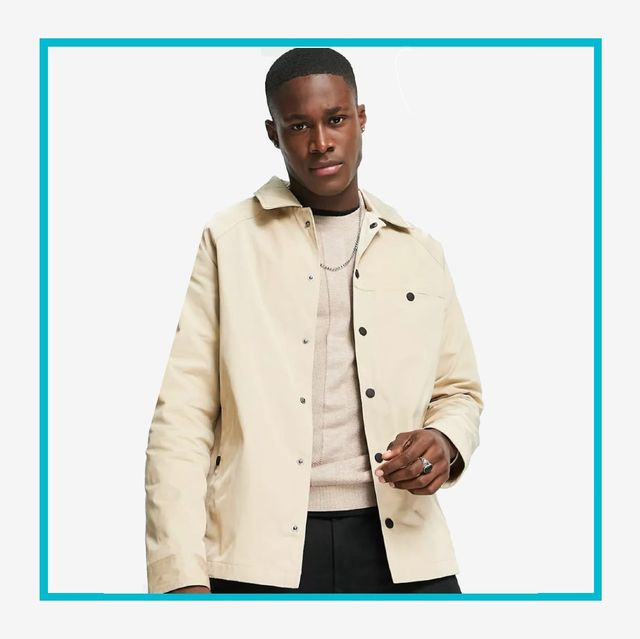The Role of Fabric in Defining Quality in Branded Clothing
The Role of Fabric in Defining Quality in Branded Clothing
Blog Article
The Value of Lasting Garments: Just How It Affects the Atmosphere and Your Wardrobe
Lasting clothing is progressively recognized for its vital duty in reducing the environmental influence of the rapid fashion sector. By concentrating on green products and ethical manufacturing approaches, it resolves pressing environmental issues. This shift not only profits the world but additionally affects consumer selections, causing a much more thoughtful approach to closet administration. Comprehending these characteristics raises essential questions concerning fashion's future and individual responsibility in forming it.
The Ecological Footprint of Quick Style

Advantages of Sustainable Materials
Lasting products use significant benefits, especially via eco-friendly fabric choices that lessen ecological harm. These products also show durability and long life, lowering the need for regular substitutes. Therefore, they add to an extra sustainable fashion industry and promote responsible customer behavior.
Eco-Friendly Material Options
While the style market has long been related to fast trends and environmental injury, the surge of green material selections presents a transformative opportunity. Sustainable materials such as natural cotton, hemp, and Tencel have actually gained popularity as a result of their lower eco-friendly effect. These fabrics are commonly produced without damaging chemicals and require less water, reducing their carbon impact - Branded Clothing. In addition, numerous eco-friendly fabrics are naturally degradable, adding to a round economic situation by minimizing waste. Selecting sustainable materials not just supports eco liable techniques however additionally promotes much healthier environments. As consumers end up being more knowledgeable about their acquiring power, the demand for eco-friendly fabrics encourages brand names to introduce and embrace even more lasting manufacturing techniques, eventually profiting the planet and future generations
Sturdiness and Durability Benefits
Lots of consumers are increasingly recognizing the resilience and durability benefits of lasting products in their apparel choices. Unlike conventional fabrics, sustainable materials such as natural cotton, hemp, and recycled polyester are engineered to stand up to deterioration, leading to garments that last much longer. This decreased regularity of replacement not only saves consumers cash gradually however also lessens waste created by quick fashion. In enhancement, lasting apparel frequently employs green production approaches that boost material stamina, contributing to a reduction in the total carbon impact. By purchasing resilient apparel, customers can grow a more lasting closet while delighting in high-grade pieces that keep their visual and performance in time. Sturdiness and longevity stand as crucial benefits of choosing sustainable materials.
Minimizing Waste Through Lasting Practices
Lowering waste in the apparel industry can be attained with cutting-edge techniques such as upcycling and repurposing products. Furthermore, adopting minimalist closet strategies urges consumers to prioritize quality over amount, ultimately decreasing garments consumption. With each other, these techniques add significantly to a more sustainable clothes design.
Upcycling and Repurposing Products
Upcycling and repurposing materials have actually emerged as innovative approaches in the style industry, transforming disposed of textiles right into valuable new products. This approach not only lessens waste however additionally urges creative thinking and individuality in clothing layout. By taking old garments and products, developers can create special items that show individual design while lowering the need for brand-new sources. Furthermore, upcycling often calls for less energy and water contrasted to typical manufacturing processes, greatly reducing the ecological impact of style. As customers come to be much more conscious of sustainability, the appeal of upcycled apparel proceeds to rise, promoting a circular economic climate. Inevitably, these techniques add to a more sustainable future, where fashion focuses on ecological health and wellness over rapid production and intake.

Minimal Closet Approaches
As people increasingly seek to minimize their ecological effect, embracing minimalist wardrobe approaches has actually obtained grip as an effective strategy to sustainable style. These methods stress high quality over amount, encouraging consumers to curate a smaller collection of flexible, long lasting clothing. By concentrating on ageless pieces that can be mixed and matched, people can decrease the regularity of acquisitions and eventually decrease waste.Additionally, minimalism advertises conscious consumption, prompting consumers to assess the ethical and ecological implications of their options. This strategy not just promotes a more sustainable way of life but additionally simplifies everyday decision-making relating to clothes. As individuals embrace minimalist principles, they contribute to a style society that values sustainability and liable consumerism, ultimately causing a much more eco-conscious society.
The Function of Ethical Labor in Lasting Style
While numerous consumers are increasingly conscious of the environmental repercussions of their garments options, the value of honest labor practices in lasting style can not be ignored. Moral labor incorporates reasonable earnings, risk-free working problems, and regard for employees' legal rights, creating the backbone of accountable fashion production. Brands that focus on honest labor not just uplift communities however additionally established a requirement for accountability in the industry.Moreover, the combination of honest techniques fosters transparency, making it possible for customers to make informed selections concerning their acquisitions. This practice contrasts greatly with fast fashion's exploitative labor versions, which frequently focus on revenue over individuals. By supporting business dedicated to moral labor, customers add to a system that values human dignity together with environmental sustainability. Ethical labor is not merely an add-on; it is vital to the more comprehensive mission of sustainable fashion, making certain that the mission for eco-friendliness does not come at the cost of human legal rights.
The Impact of Lasting Clothing on Carbon Emissions
Lasting garments has the prospective to greatly lower carbon discharges related to the garment industry. Standard garment production contributes significantly to greenhouse gas exhausts, primarily because of energy-intensive manufacturing processes and making use of non-renewable sources. In comparison, sustainable fashion concentrates on eco-friendly materials, such as natural cotton or recycled fibers, which usually call for less energy to produce.Moreover, lasting brand names often tend to adopt much more reliable production methods, lessening waste and reducing general exhausts. By focusing on sturdiness and classic design, sustainable apparel motivates customers to get much less frequently, further lowering the carbon footprint connected with overconsumption.Additionally, several lasting brands are committed to transparency in their supply chains, enabling consumers to make enlightened choices that line up with their worths. Inevitably, moving in the direction of lasting clothes can cause a substantial decrease in carbon discharges, adding to a much healthier planet and an extra sustainable future for the style market.
Sustaining Regional Economies With Lasting Options
The link change towards sustainable clothes not only addresses environmental issues however also significantly advantages neighborhood economies. By selecting sustainable style, consumers typically support neighborhood artisans and small companies, enhancing area durability. These business commonly run on a smaller range, focusing on craftsmanship and honest methods over mass production.Investing in locally made sustainable clothing fosters task creation and promotes economic growth within communities. As customers come to be much more familiar with the ecological influence of their acquisitions, they increasingly choose items that show their values. This demand motivates neighborhood manufacturers to adopt lasting practices, contributing to a round economy.Moreover, sustaining regional companies minimizes transport emissions, aligning with eco-conscious customer habits. The interconnectedness of lasting apparel and local economic situations underscores the crucial function that private choices play in advertising both ecological and financial health and wellness. By promoting these neighborhood links, communities can prosper while likewise working in the direction of a much more sustainable future.
Transforming Your Storage Room: Tips for a Lasting Closet
As people look for to lower their ecological impact, transforming a wardrobe right into a sustainable wardrobe comes to be a crucial action. One reliable method is to review existing clothes, keeping only items that are worn consistently and that straighten with sustainability objectives. Prioritizing high quality over amount is essential; investing in durable items from eco-friendly brands can greatly reduce waste.Additionally, including pre-owned things can rejuvenate a wardrobe while minimizing environmental damage. Organizing clothing swaps with close friends or giving away unused products can better advertise sustainability.When buying, people ought to look for products that are organic, recycled, or naturally degradable, and avoid quick find more info style sellers - Branded Clothing. Ultimately, practicing mindful intake by thoughtfully taking into consideration each purchase can add to a more lasting lifestyle. By carrying out these ideas, one can produce a wardrobe that shows individual style while supporting ecological stewardship
Often Asked Questions
Exactly How Can I Recognize Sustainable Apparel Brands?
To recognize lasting clothing brands, one ought to research materials used, examine for qualifications like Fair Trade, and analyze the brand's transparency concerning their manufacturing processes, labor techniques, and ecological impact, making certain ethical and eco-friendly methods are prioritized.
What Are the Prices Connected With Lasting Fashion?
The expenses linked with lasting style can differ substantially. Greater production expenses, honest sourcing, and environment-friendly materials frequently bring about boosted list prices, which might hinder some customers while attracting ecologically conscious shoppers.
Can Sustainable Garments Be Fashionable and elegant?
Sustainable garments can without a doubt be stylish and stylish. Developers increasingly focus on cutting-edge materials and ethical manufacturing methods, confirming that style and sustainability can coexist. Consumers now have diverse options that mix appearances with ecological consciousness.
How Does Washing Garments Affect Their Sustainability?
Washing clothes significantly effects sustainability by consuming water and energy, adding to pollution, and causing microplastic release. Frequent washing can degrade textiles, shortening their lifespan and raising the demand for replacements, inevitably exacerbating ecological problems.
What Is the Lifespan of Lasting Clothes Contrasted to Quick Fashion?
The life expectancy of lasting apparel typically surpasses that of rapid style products, commonly enduring several years as a result of quality products and workmanship. On the other hand, quick fashion garments might weaken quickly, necessitating even more regular substitutes. Lasting clothes is progressively recognized for its essential role in reducing the ecological influence of the quick style market. While try here many customers are significantly mindful of the ecological effects of their garments choices, the value of ethical labor methods in lasting fashion can not be ignored. Branded Clothing. Lasting apparel has the potential to considerably reduce carbon emissions associated with the fashion industry. In contrast, lasting style focuses on green products, such as natural cotton or recycled fibers, which frequently require much less power to produce.Moreover, lasting brand names have a tendency to adopt a lot more effective production practices, decreasing waste and decreasing total exhausts. By focusing on longevity and classic layout, sustainable garments urges customers to get much less frequently, more reducing the carbon impact linked with overconsumption.Additionally, lots of lasting brand names are dedicated to openness in their supply chains, enabling consumers to make enlightened selections that straighten with their values
Report this page